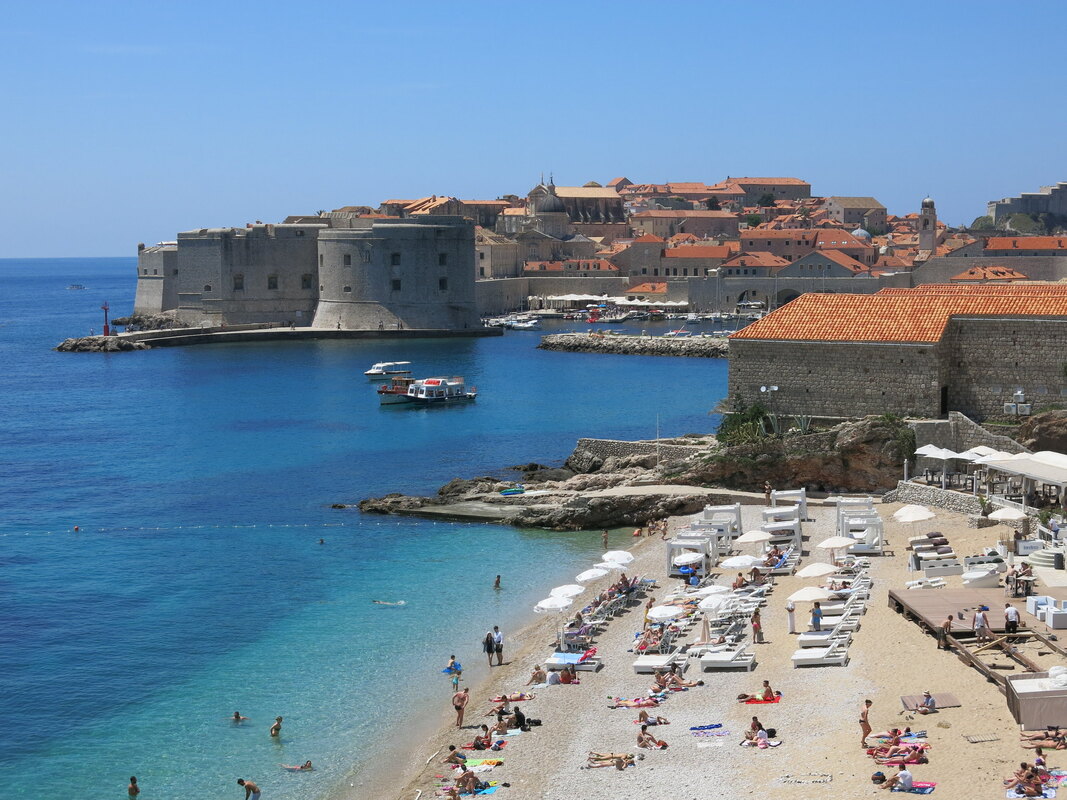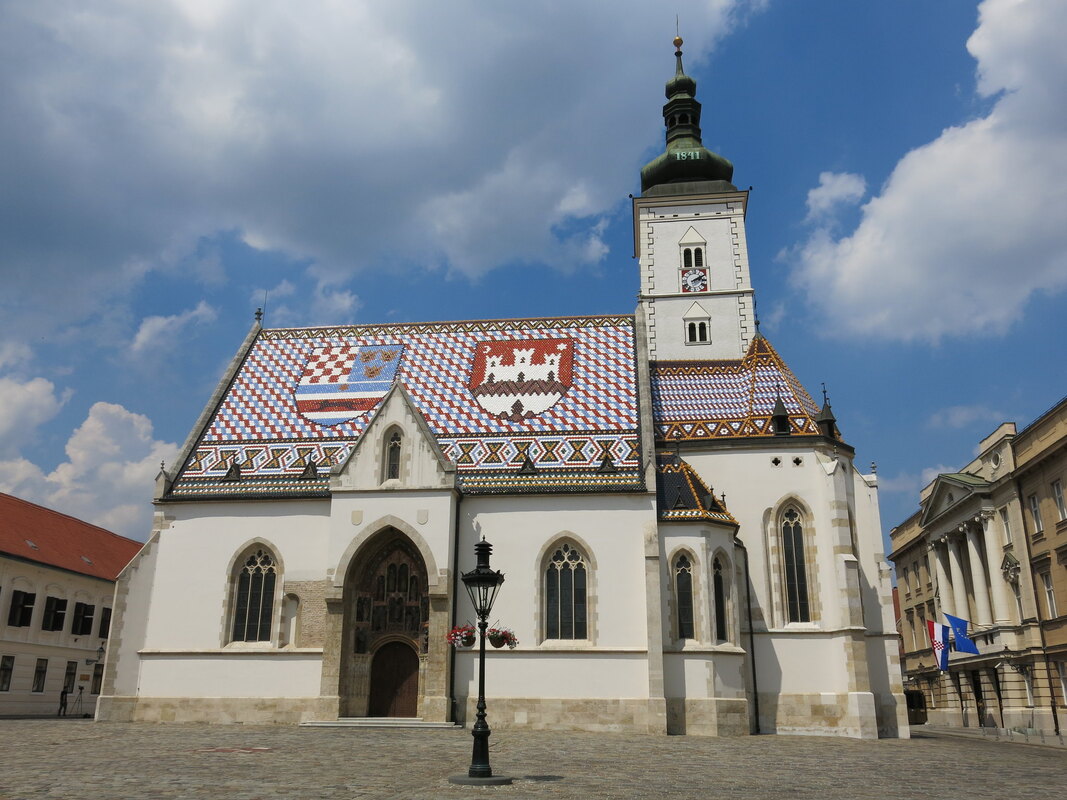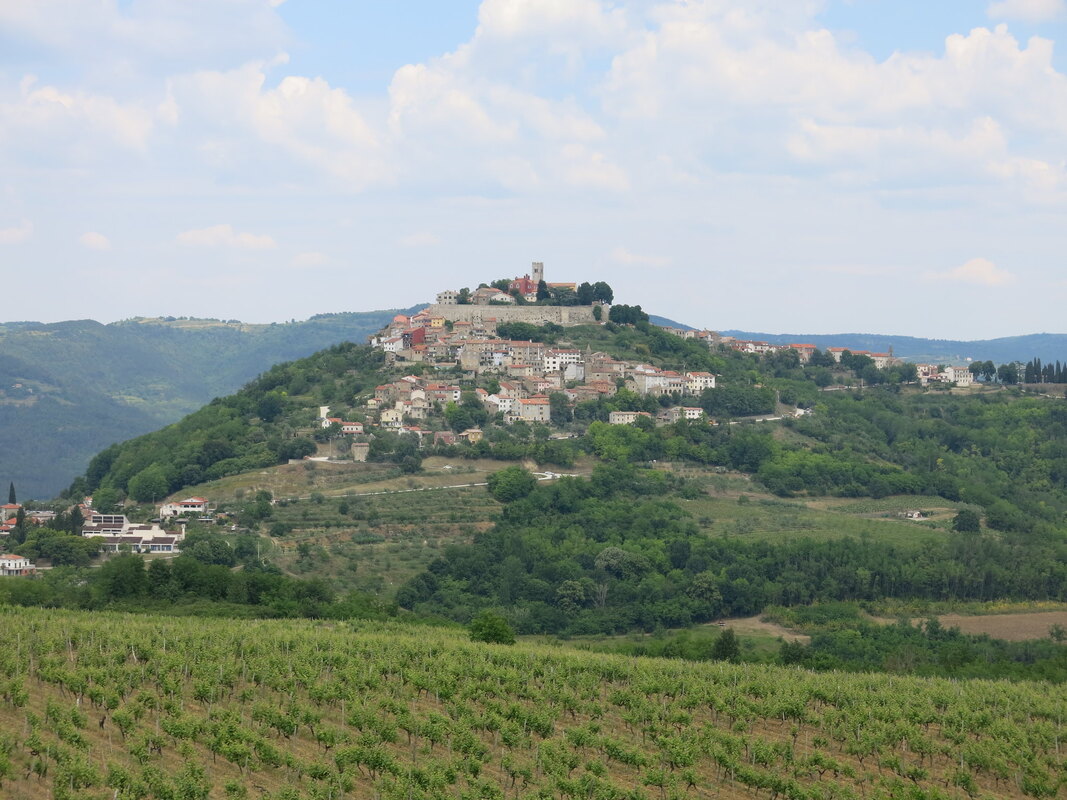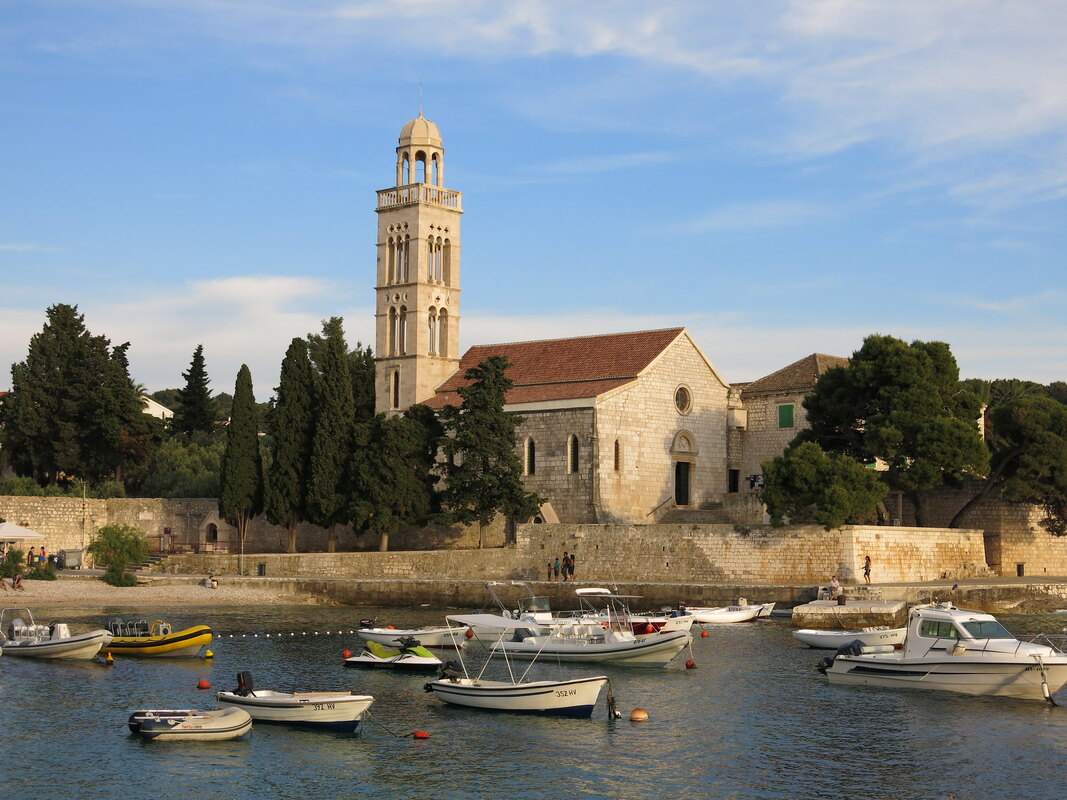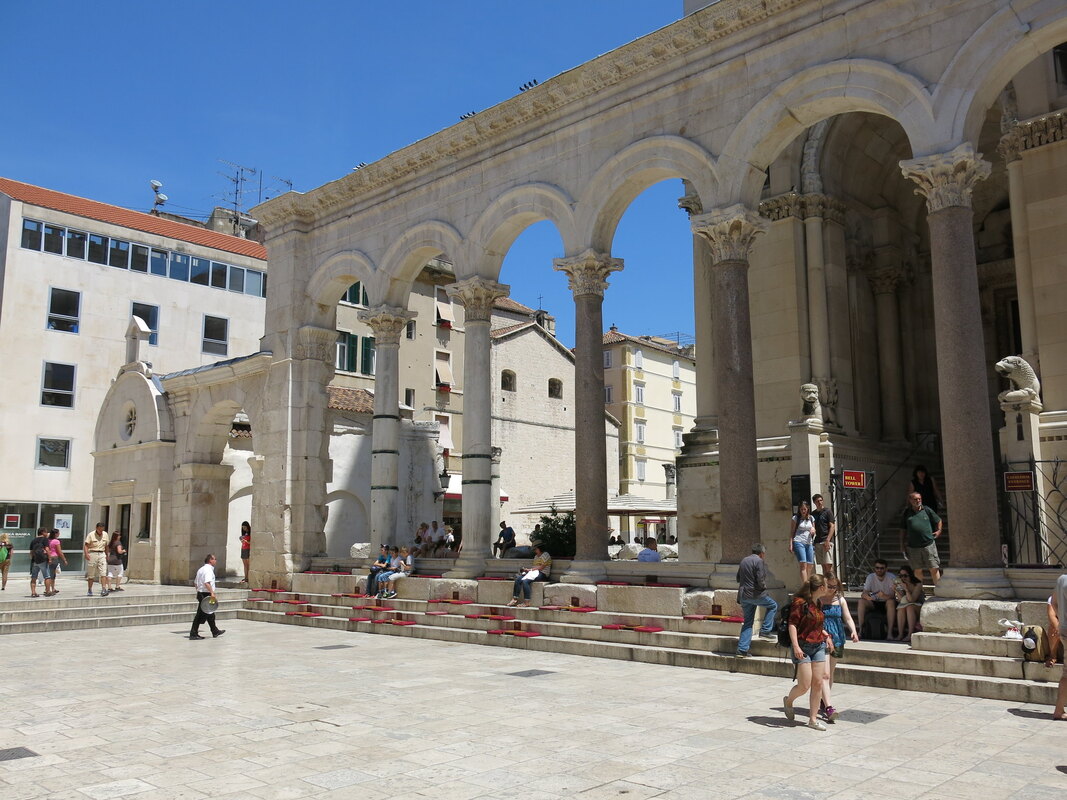CROATIA
To Americans that rarely travel beyond the U.S., and then when they do travel to Europe, leave the destinations to Western Europe, Croatia sounds like an exotic destination. The former Yugoslavia. An Eastern European Country. It’s none of those things. Croatia is Italy light. Nothing wrong with that but it’s not some foreign, exotic country. It looks Italian. It feels Italian. It sounds Italian. Oh and Europeans have been travelling to Croatia for years. It’s been a popular European honeymoon location for centuries—it’s just Americans who have recently “discovered” Croatia whether through Lonely Planet promotions or as primary Game of Thrones filming location. Everyone else has known about the country for years so the country has a very mature tourism industry and it’s tricky to get away from all the crowds.
CROATIA DESTINATIONS
Population: 4,284,889
21,851 sq mi - size of West Virginia
HISTORY
1538 - 1918: Austro-Hungarian Empire Rule
1918 - 1991: Yugoslavia
June 25, 1991: Independence
21,851 sq mi - size of West Virginia
HISTORY
1538 - 1918: Austro-Hungarian Empire Rule
1918 - 1991: Yugoslavia
June 25, 1991: Independence
Croatia is not a budget or cheap place to visit. While Accommodation, Food, and transportation prices are not as high as the major Western European destinations they are not the good value found elsewhere in the former Yugoslavia countries and Eastern Europe. The higher prices are very noticeable as soon as you cross into Slovenia and prices drop.
Hotel Accommodation
To mitigate high costs (and hopefully avoid high volumes of other vacationers) it's best to visit outside of peak season. Hotel Prices from September through May will be half the prices during June, July, and August. This was particular noticeable in Dubrovnik where prices for a bed in a four person dorm where I stayed jumped from $20 USD per night on May 31 to $45 on June 1. Even prices in Split and Rijeka seemed high for what was offered with eight bed dorms costing around $20 USD per night for minimal facilities. Prices dropped to under $15 USD per night in Zagreb, which not coincidentally has far fewer tourists passing through.
The hotel accommodation situation also does not help solo travelers - many of the islands and smaller coastal towns do not have hostels. The lowest prices I saw in June were $40 for a bed in someone's house.
Most hostels are located in or near the main attractions and easily reachable from bus and/or train stations.
Dubrovnik is the town where you'll need to do some planning on where to stay. It's hard to resist the lure of staying in the Old Town. Most of the large, resort style hotels are outside the Old Town limited your into the Old Town options to boutique hotels. The Old Town is about a fifteen minute bus ride from the bus station and cruise ship pier. Buses run about every twenty minutes and cost ~ $2 USD. Taxis have a fixed rate based upon the part of the city and aren't a bad value.
Food
The coastal location means lots of fish, octopus, and other sea creatures on the menu.
Croatia's higher hotel prices were frustrating but bearable...the higher food prices were more annoying. Dinner with a beer averaged $15 USD which doesn't sound too bad but I thought the quality was poor, especially compared to Bosnia, Slovenia, Serbia, and Bulgaria, and pretty much every other country I've been to. I tried. And tried. The primary issue in the Croatia tourist destinations is that it's very difficult to find where locals dine simply because tourists outnumber locals.
In Dubrovnik I went to 360 Restaurant one of the city's best and in a prime location over looking the Eastern Gate. I order octopus and for some inexplicable reason they melted cheese on top. Confused I ordered a second plate thinking I misfired. The next dish was a fish carpaccio and it looked like puke - photo evidence below. These two dishes and a beer cost $80 USD.
The Istria peninsula in the north is known for their truffles. I went to a restaurant featured on No Reservations and while the dish wasn't bad it certainly didn't meet lofty expectations. A tour group sat down shortly after I ordered I felt like for lunch that if the dishes weren't prepared in advanced there was much as much focus on the plate as there may be in the evening.
The Istria peninsula is also known for its mussels harvested from the calm, clean, and clear lim channel. The mussels are not as "meaty" as the ones from Belgium / the Netherlands, however, I think the Croatians have these countries beat on their pan cooking technique and garlic sauce. I ate an entire loaf of bread making sure none of the sauce went to waste.
Perhaps my favorite dish, even more than the mussels, was a pizza roll found in Split. I'm not sure of the exact name but I called it the Italian Burrito as it was basically a pizza crust rolled up with the pizza ingredients stuffed inside.
Again prices in Zagreb were noticeably cheaper.
Transportation
Buses are the primary form of travel with much more frequent arrivals and departures than trains. The buses also take about the same amount of travel time. The key with the buses is knowing whether you are taking a "local" or an "express" - in some cases you may not have an option. The locals will hug the coast line stopping at every seaside town while the express will shoot inland about ten miles and take an expressway between major cities. For routes and times check BLANK - there's a "seat fee" that ads a dollar or two to the final price. Each piece of luggage that goes in the under carriage storage costs 12 Kuna.
Dubrovnik to Split - 165 Kuna - 4 hours
Split to Rijeka - 330 (?) Kuna - 8 hours
Rijeka to Trieste - 55 Kuna - 2 hours
Ljubljana to Zagreb - 12 EUR - 2 hours
The best alternative to taking the bus is a ferry, particularly for the stretch between Dubrovnik and Split. The ferry that makes this run also stops at islands along the way such as Korcula and Hvar. Overwhelmed with the number of tourists making taking this route I opted for the bus. During the summer companies will advertise "Yacht Week" which involves joining or chartering a "yacht" and visiting the islands on a private boat.
Perhaps the best way to travel and experience Croatia is via a car rental. During the bus rides I passed several awesome looking small towns and beach coves that would have made great stops. Croatia roads are smooth and easy to navigate although the tolls can be expensive - 25 miles -> $4 USD. It would have cost about $70 USD to fill up the tank of my midsize rental car. I think the route that most people go is to rent the car in either Zagreb or Rijeka, loop through the Istria peninsula the head south to Split. There are still towns between Dubrovnik and Split but I thought the small towns in the north were "better" and after reaching Split its just as easy to hop on a bus or more likely a boat and leave the car behind.
Trains operate as far south as Split. Zagreb has several international arrival and departure points but depending upon the train company the price may be much higher than a bus - the train from Ljubljana costs $32 EUR and is only thirty minutes faster.
Within the city everything is compact to walk although if you want to get out of the tourist zone the bus system is pretty easy to navigate.
Hotel Accommodation
To mitigate high costs (and hopefully avoid high volumes of other vacationers) it's best to visit outside of peak season. Hotel Prices from September through May will be half the prices during June, July, and August. This was particular noticeable in Dubrovnik where prices for a bed in a four person dorm where I stayed jumped from $20 USD per night on May 31 to $45 on June 1. Even prices in Split and Rijeka seemed high for what was offered with eight bed dorms costing around $20 USD per night for minimal facilities. Prices dropped to under $15 USD per night in Zagreb, which not coincidentally has far fewer tourists passing through.
The hotel accommodation situation also does not help solo travelers - many of the islands and smaller coastal towns do not have hostels. The lowest prices I saw in June were $40 for a bed in someone's house.
Most hostels are located in or near the main attractions and easily reachable from bus and/or train stations.
Dubrovnik is the town where you'll need to do some planning on where to stay. It's hard to resist the lure of staying in the Old Town. Most of the large, resort style hotels are outside the Old Town limited your into the Old Town options to boutique hotels. The Old Town is about a fifteen minute bus ride from the bus station and cruise ship pier. Buses run about every twenty minutes and cost ~ $2 USD. Taxis have a fixed rate based upon the part of the city and aren't a bad value.
Food
The coastal location means lots of fish, octopus, and other sea creatures on the menu.
Croatia's higher hotel prices were frustrating but bearable...the higher food prices were more annoying. Dinner with a beer averaged $15 USD which doesn't sound too bad but I thought the quality was poor, especially compared to Bosnia, Slovenia, Serbia, and Bulgaria, and pretty much every other country I've been to. I tried. And tried. The primary issue in the Croatia tourist destinations is that it's very difficult to find where locals dine simply because tourists outnumber locals.
In Dubrovnik I went to 360 Restaurant one of the city's best and in a prime location over looking the Eastern Gate. I order octopus and for some inexplicable reason they melted cheese on top. Confused I ordered a second plate thinking I misfired. The next dish was a fish carpaccio and it looked like puke - photo evidence below. These two dishes and a beer cost $80 USD.
The Istria peninsula in the north is known for their truffles. I went to a restaurant featured on No Reservations and while the dish wasn't bad it certainly didn't meet lofty expectations. A tour group sat down shortly after I ordered I felt like for lunch that if the dishes weren't prepared in advanced there was much as much focus on the plate as there may be in the evening.
The Istria peninsula is also known for its mussels harvested from the calm, clean, and clear lim channel. The mussels are not as "meaty" as the ones from Belgium / the Netherlands, however, I think the Croatians have these countries beat on their pan cooking technique and garlic sauce. I ate an entire loaf of bread making sure none of the sauce went to waste.
Perhaps my favorite dish, even more than the mussels, was a pizza roll found in Split. I'm not sure of the exact name but I called it the Italian Burrito as it was basically a pizza crust rolled up with the pizza ingredients stuffed inside.
Again prices in Zagreb were noticeably cheaper.
Transportation
Buses are the primary form of travel with much more frequent arrivals and departures than trains. The buses also take about the same amount of travel time. The key with the buses is knowing whether you are taking a "local" or an "express" - in some cases you may not have an option. The locals will hug the coast line stopping at every seaside town while the express will shoot inland about ten miles and take an expressway between major cities. For routes and times check BLANK - there's a "seat fee" that ads a dollar or two to the final price. Each piece of luggage that goes in the under carriage storage costs 12 Kuna.
Dubrovnik to Split - 165 Kuna - 4 hours
Split to Rijeka - 330 (?) Kuna - 8 hours
Rijeka to Trieste - 55 Kuna - 2 hours
Ljubljana to Zagreb - 12 EUR - 2 hours
The best alternative to taking the bus is a ferry, particularly for the stretch between Dubrovnik and Split. The ferry that makes this run also stops at islands along the way such as Korcula and Hvar. Overwhelmed with the number of tourists making taking this route I opted for the bus. During the summer companies will advertise "Yacht Week" which involves joining or chartering a "yacht" and visiting the islands on a private boat.
Perhaps the best way to travel and experience Croatia is via a car rental. During the bus rides I passed several awesome looking small towns and beach coves that would have made great stops. Croatia roads are smooth and easy to navigate although the tolls can be expensive - 25 miles -> $4 USD. It would have cost about $70 USD to fill up the tank of my midsize rental car. I think the route that most people go is to rent the car in either Zagreb or Rijeka, loop through the Istria peninsula the head south to Split. There are still towns between Dubrovnik and Split but I thought the small towns in the north were "better" and after reaching Split its just as easy to hop on a bus or more likely a boat and leave the car behind.
Trains operate as far south as Split. Zagreb has several international arrival and departure points but depending upon the train company the price may be much higher than a bus - the train from Ljubljana costs $32 EUR and is only thirty minutes faster.
Within the city everything is compact to walk although if you want to get out of the tourist zone the bus system is pretty easy to navigate.

